Tactical Porridge, the Germany-Japan Match: Does Germany Deserve to Lose?

Who would’ve pegged Germany to be on the losing side in a world cup match in the year of our lord 2022? It certainly wasn’t me. Jokes aside, Germany’s form in recent world cups has been quite poor, only highlighted further due to the lack of the killer instinct older football fans had come to know them for.
Let us take a look at some of the tactics that were at play during Germany’s loss to Japan in this year’s FIFA World Cup.
In the beginning, the German national team was trying to build the game through the two central defences, with the two fullbacks expanding the field crosswise in the form of 4+2, but Japan was defending with a 4-4-2 with two attackers pressing on Rüdiger and Nico with the “Cover Shadow” of the Double Pivot of Kimmich and Gundogan prevented them from receiving the ball.
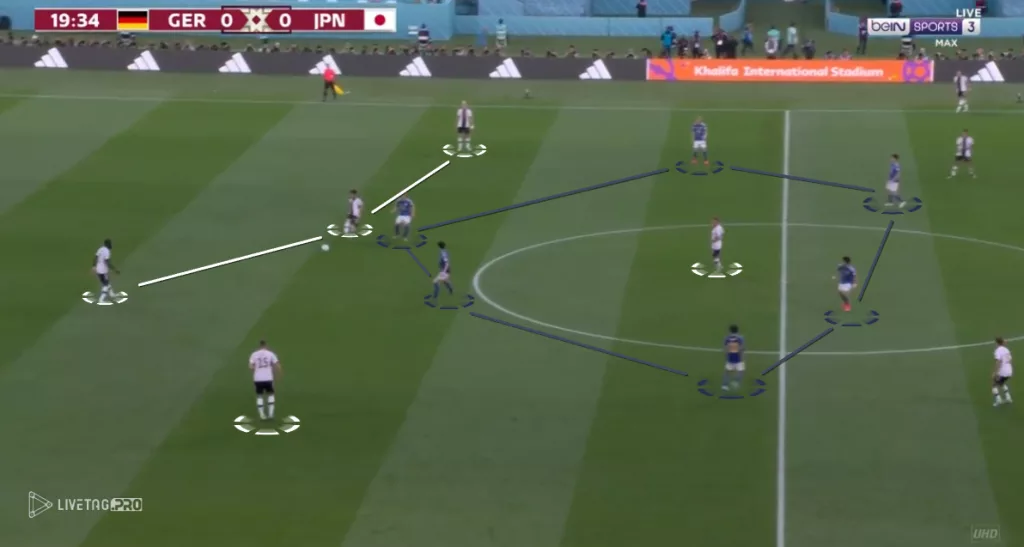
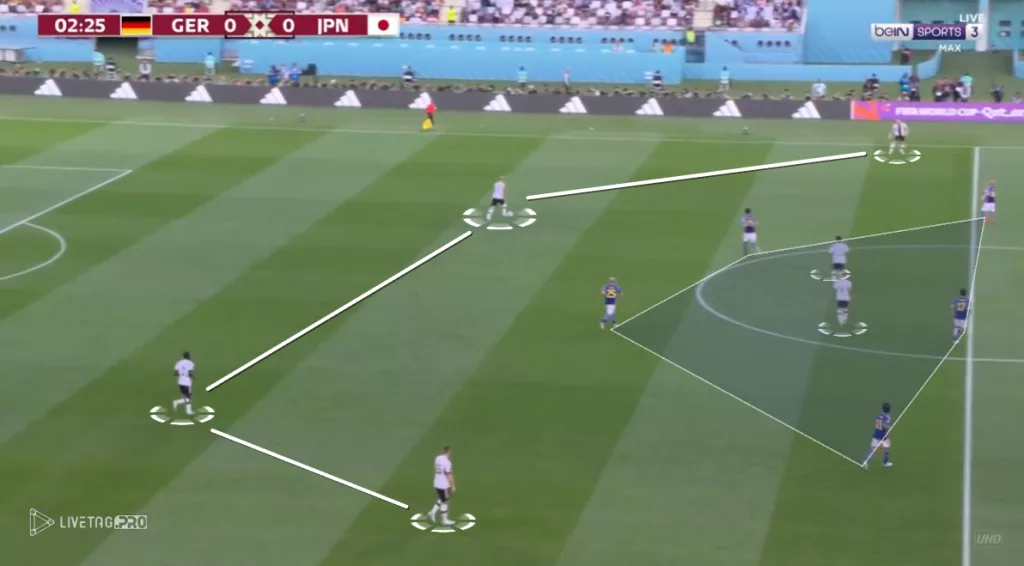
So, the obvious solution was the descent of one of the two axes of the game, Kimmich or Gundogan, between the two central points of the defence to create a three-on-two situation in the first stages of the game.
However, the problem is that Germany did not benefit from this numerical increase. Also, there was only one axis player in the German midfield Of course, the build-up process was more difficult.

The solution to this problem is the formation of a back trio. By turning the right-back Nicholas into the third centre of defence at RCB, the shape-shifted to 3+2, with a numerical increase of the Germans three-on-two. In that stage of the offensive transformation, Germany tried to create a numerical superiority over the parties by progressing as one of the frontline defenders.
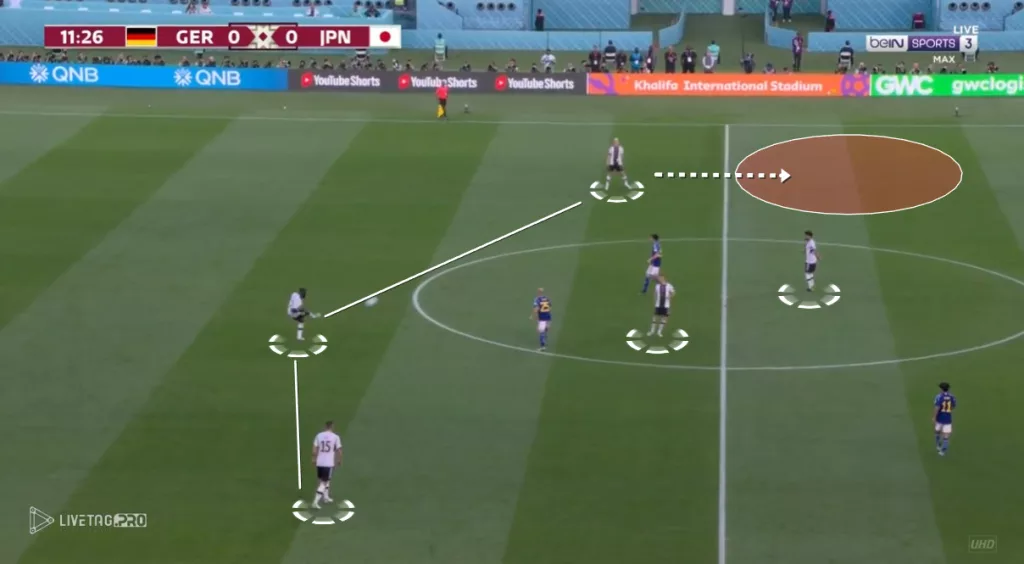
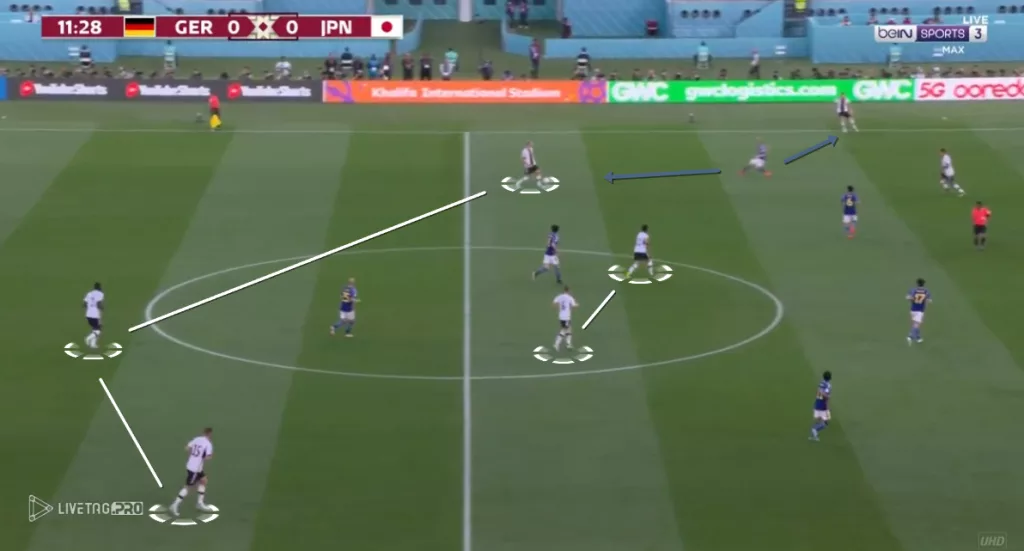
All the same, the defensive organisation of the Japanese team was up to the task. With the convergence of the lines, they prevented any numerical superiority of the Germans and prevented them from benefiting from any overload on both sides of the field, which was crucial.
Especially since one of the things that Flick relies on is putting the players together on one side and suddenly changing the field in the opposite direction of play to create a 1v1 situation on the sides for the player who expands the field crosswise.
With the compact Lines of 4-4-2 and the commitment of its attackers with the two axes of play, Kimmich and Gundogan and isolating them from receiving the ball.
How did the Samurai respond to this?
The idea is simple, and Flick usually does it with the German national team, which is to create a 2v1 situation during the development of the game, whether in the middle of the field or out wide.
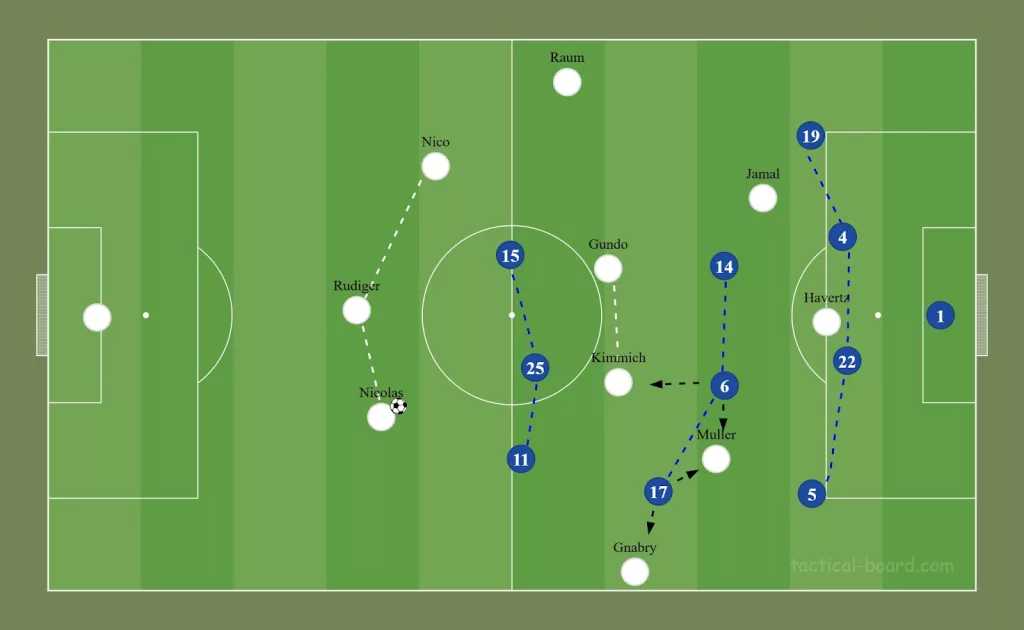
Here came the quick response from the Japanese coach by turning to the extremely flexible 5-3-2 formation to deal with the numerical increase on the sides and to return to curtail the German national team’s pivots and isolate them from playing.
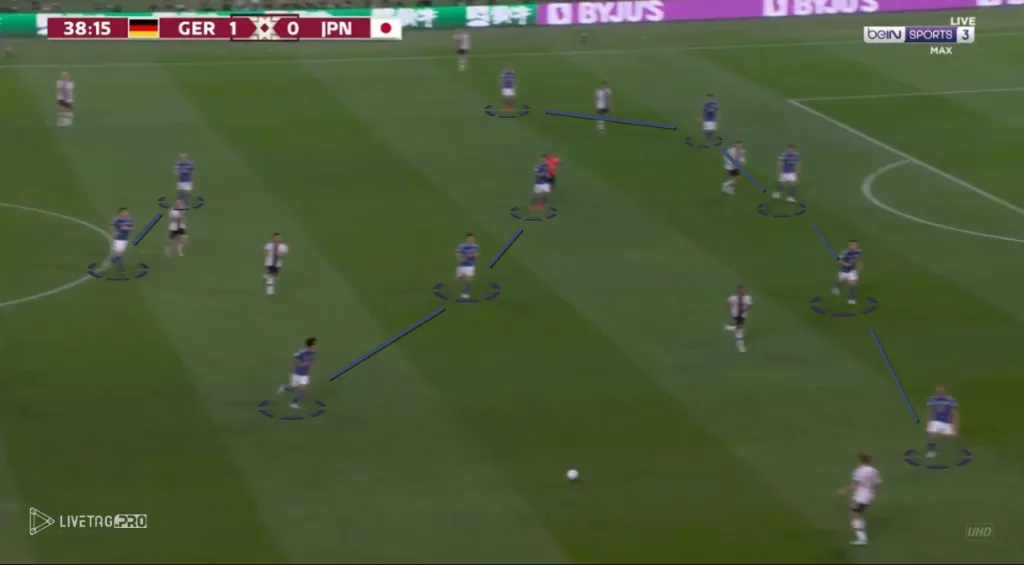
The Japanese team, in the first half, during its possession of the ball, was trying to play long balls, mostly on the sides, but it was frankly ineffective. The German team was able to recover the ball pretty easily.
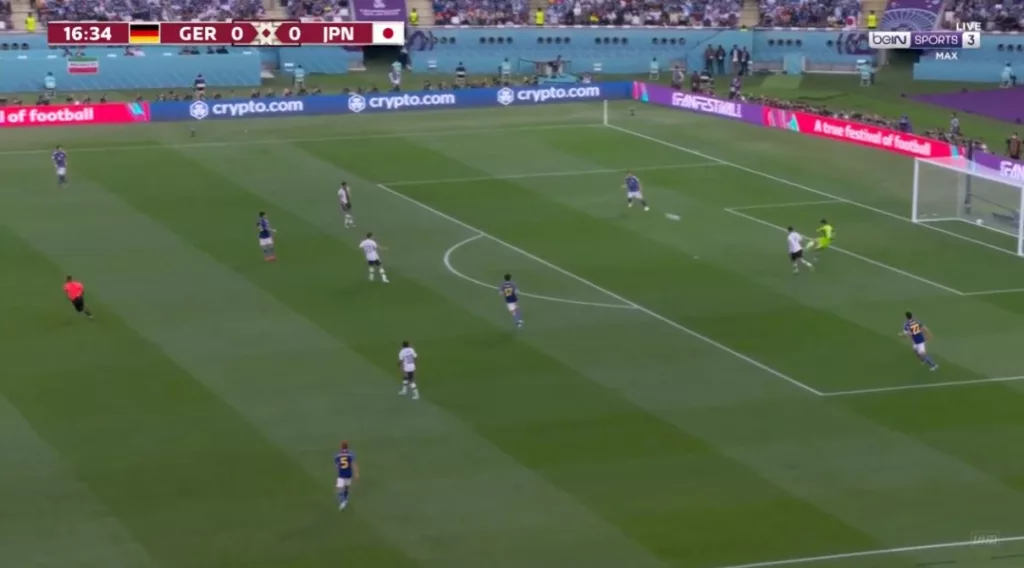
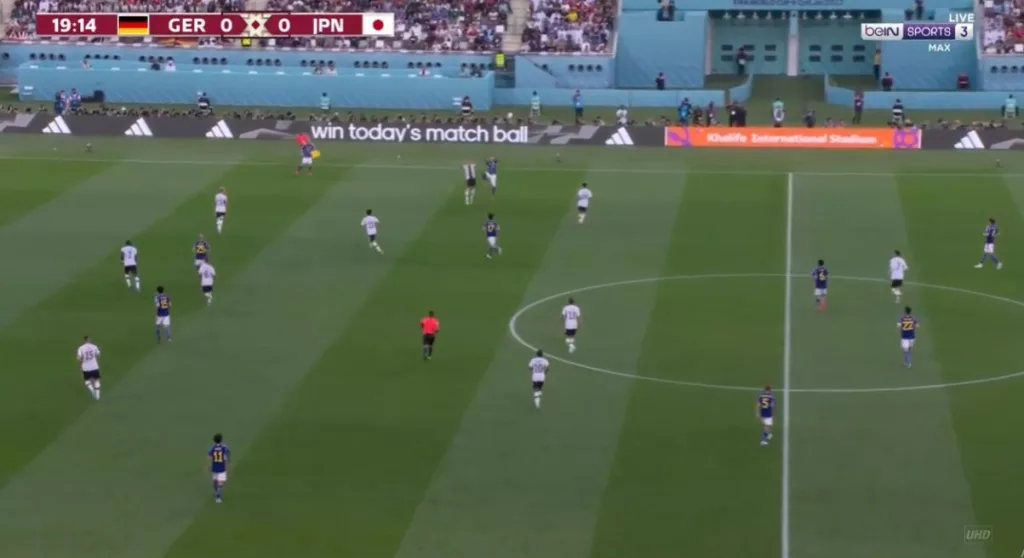
With the start of the second half, the shape transformed into a 3-4-3, the greater purpose of the idea here is to create a numerical superiority over the parties for Japan, control the ball for a longer period, and put pressure on the backs of modest Germany. To deal with this problem, the shape of the German national team was modified through pressure.
The German wingers and strikers pressed the hearts of the defence with Cover Shadow for the two axes of play in Japan, and when the ball was played on the sides, Kimmich or Gundogan played the role of covering and preventing the Japanese numerical superiority.
When the Japanese team succeeded in achieving a numerical advantage, they were able to score the first goal, which was the plan for the equalizing goal for Japan.
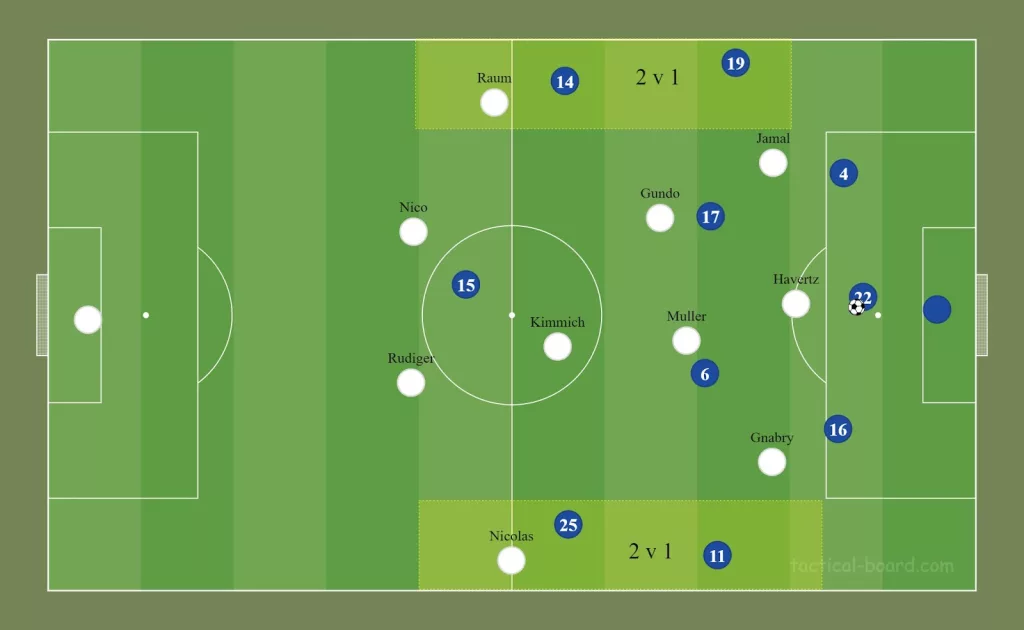
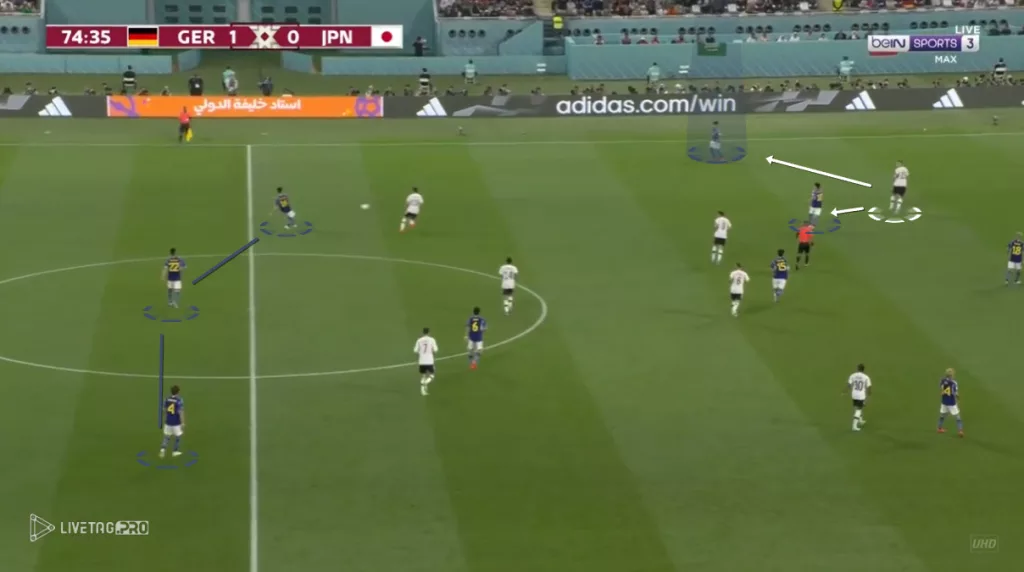
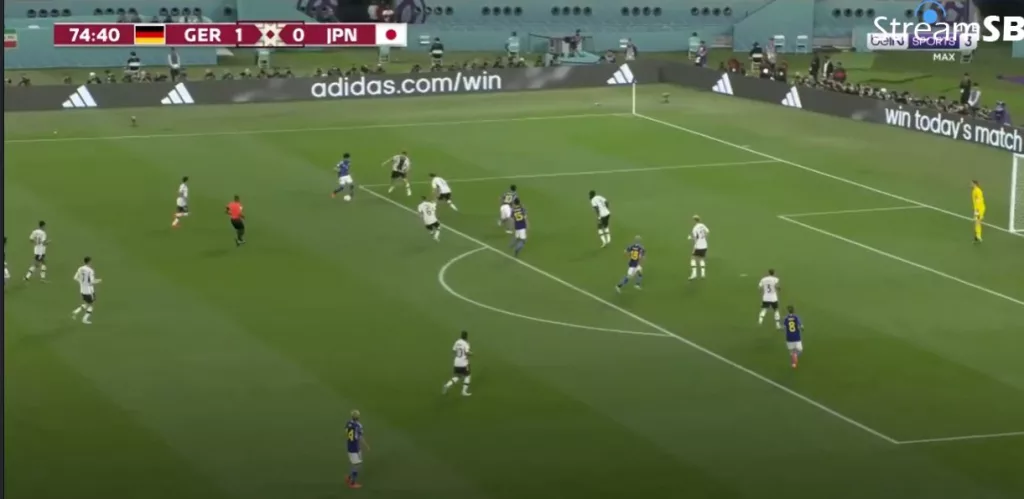
It is worth noting that after the equalizing goal, the Japanese national team turned to a 5-4-1, with Man-to-Man close control, and the German team was strangled in the middle of its stadium and forced to play long balls.
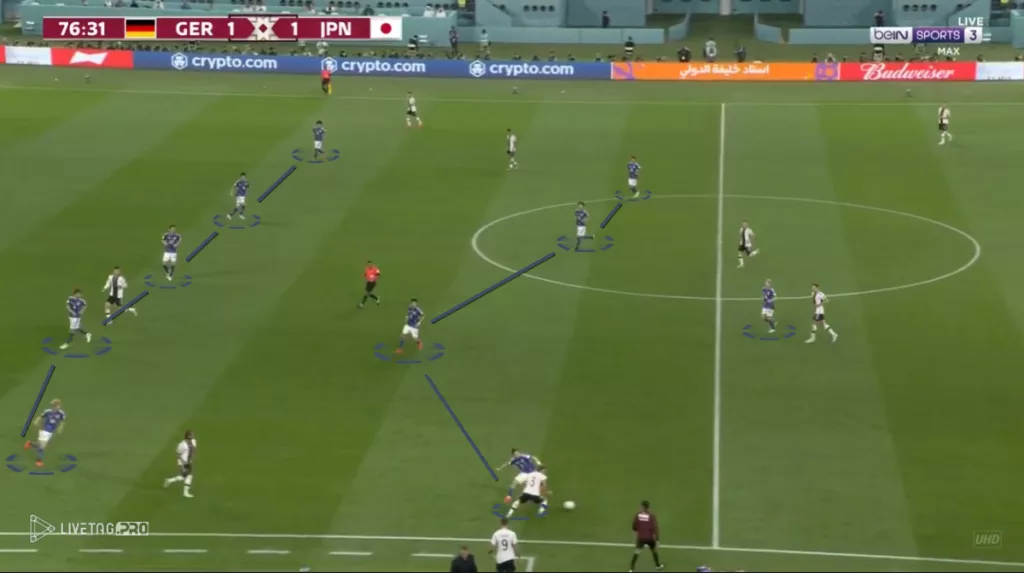
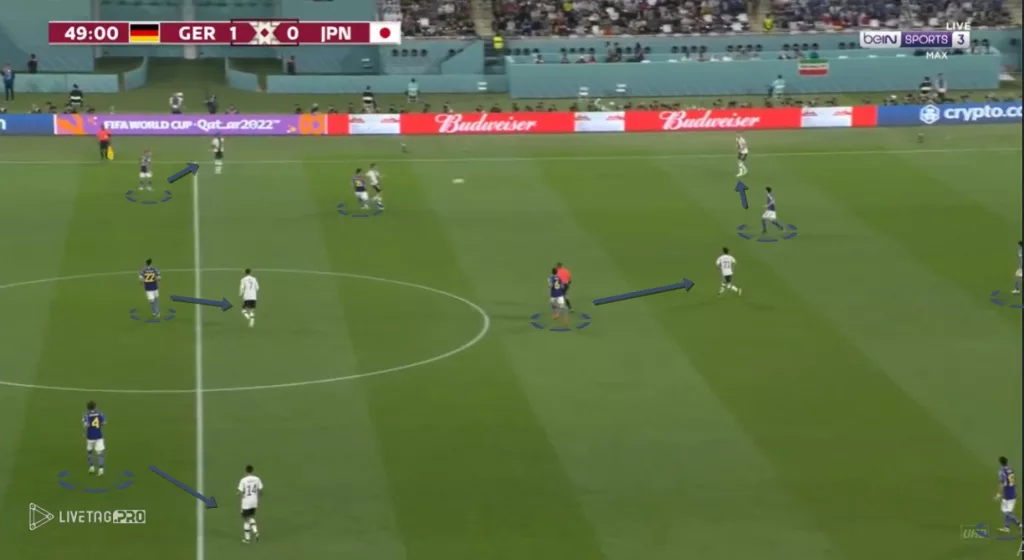
The Samurai Blues’ underdog story did not quite translate into a good run of form as they dropped points against Costa Rica in their next match. At the time of writing, Japan is yet to qualify as they face in-form Spain in the final match of Group E.
Visit our Instagram and Facebook.
Follow The Interlude for more.





